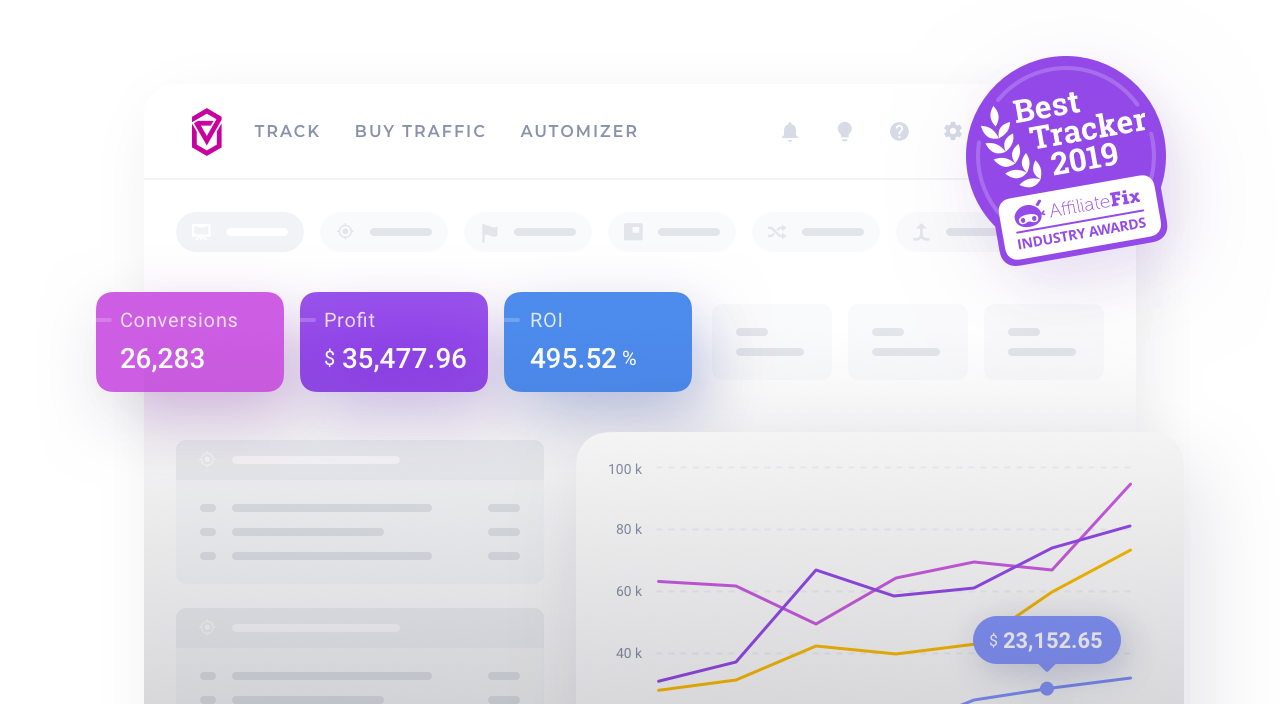Meta Ads Template Integration

You can track Facebook or Instagram traffic with two methods of tracking: redirect or direct. Read the Tracking section to learn more about those methods and decide, which one will work for you. This article will describe the direct method of tracking, as it is the recommended one.
Facebook Integration
Note that Facebook Ads (now Meta Ads) does not support passing cost information via the dynamic token. However, to cover that part Voluum has developed the Integration feature that offers a deeper connection between these two platforms. This connection allows for accurate cost values to be passed. If you want to use this feature, complete this guide and go to the Facebook Integration article.
Prerequisites
Before you can start, you need to have:
- An active Voluum account.
- An active Facebook Ads (now Meta Ads) or Instagram account, either a personal one or a business one, and basic knowledge of how to set up a regular campaign in Facebook Ad Manager.
- An offer to promote, with an offer link available for a quick reference and a corresponding offer element added in Voluum.
- Basic knowledge of Voluum. If you are just starting to work with Voluum, we recommend reading our Getting Started guide.
If you have everything ready, we can get started.
I. Create a Campaign in Voluum
Create a campaign to generate a campaign URL that you will submit as a destination URL in Meta Ads.
- Add an offer.
- (Optionally) Add a lander.
- Add a Meta Ads traffic source from a template.

- Start creating Voluum campaign.
- Fill the required campaign details, select the Meta Ads traffic source, and an offer and lander. Save your campaign.

- Copy both the direct tracking URL and direct tracking script.

- Implement the direct tracking script in your page's code.
II. Create a Campaign in Meta Ads
Part Two: Reporting Conversions
At this point, you have set up tracking visits and clicks. When a visitor takes your offer and converts, this information can be passed back to Voluum from an affiliate network platform. If you want to send information about conversion back to Facebook Ad Manager from Voluum, you have to use the Conversion Tracking Pixel to get information about a conversion from an affiliate network platform.
Facebook Ad Manager supports only one method of tracking conversions, and that is Facebook Pixel. It is a small script that Facebook provides. In this script, there is a target URL link where information about conversion is sent. Voluum can simply send this information to this target URL with its Redirect Pixel feature.
Voluum Info: There is a workaround to report conversions back to Facebook Ads (now Meta Ads), even if you use S2S postback method to get information from an affiliate network platform. You still need to get the target URL form the Facebook Pixel. This workaround is described below. However, bear in mind that this workaround will limit your reporting options.
To pass information about conversions back to Facebook, you have to create Facebook Pixel.
I. Creating the Facebook Pixel
To create a Facebook Pixel, perform the following steps:
- In the Facebook Ad Manager, in the Ad section, scroll down and click the Show advanced settings option.
-
Scroll down to the Conversion Tracking section and click the Set up button next to the Facebook pixel.

-
Provide the name of the pixel in the Pixel name text field and click the Next button.

-
Click the Set up Pixel now option.

-
Select the Manually install the code yourself option.

-
Scroll down to the 2. Copy the entire pixel code and paste it into the website header section and copy the code by clicking it.

- Paste the copied code to any text editing tool and click the Continue button.
- Provide any additional options on the next screen and click the Done button.
II. Configuring Conversion Reporting on Voluum Side
In your Facebook Pixel script, there is a target URL. Look into this script and locate a URL link that is preceded by src=. Copy the URL only to the clipboard. This URL should look like this: https://www.facebook.com/tr?id=760587514278356%ev=Purchase&noscript=1
Setting up Redirect Pixel in Voluum
Right now for the final step, you need to configure conversion reporting in Voluum. To do that, perform the following steps:
- In Voluum, go to the Traffic Sources tab.
- Select the Facebook or Instagram traffic source element that you have created and click the Edit button.
- In the Pixel Redirect URL text field paste the target link that you have obtained from Facebook Pixel.
-
Click the Save button.

The whole information flow circle is complete. Visitors are redirected through Voluum to the selected destination, and information about conversion is reported back to Facebook Ad Manager, where you can see it in the Ads Manager.
Workaround: Setting up traffic source postback URL
If you still want or have to report conversions to Voluum using the S2S postback URL method and then send information about conversion to Facebook, you can use the following workaround: Get the target URL from Facebook Pixel in the same way as it was described, go to Voluum and edit the Facebook traffic source element that you have created. And then provide this target URL in the Traffic source postback URL section. This will allow conversions to be reported but will limit details visible in the Facebook Event Manager.
Frequently Asked Questions
Have more questions? You might find answers below:
Is there any risk of Facebook blocking or banning account with redirect traffic?
Facebook does not allow for changing traffic destination on the fly. People that click on an ad in Facebook must always go to the same page. Therefore, a redirect method that redirects visitors through Voluum tracking domain is not allowed. If you want to advertise on Facebook, you should use a direct tracking method.



